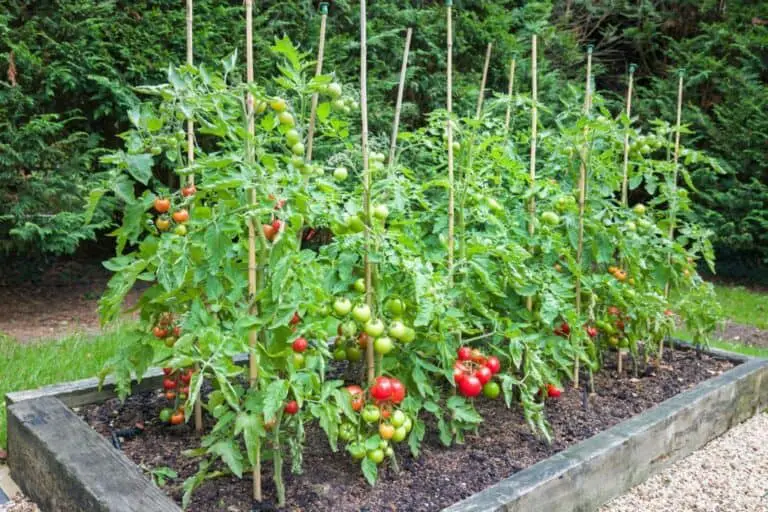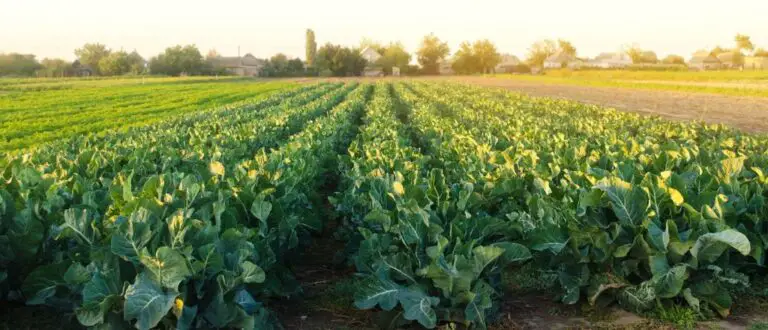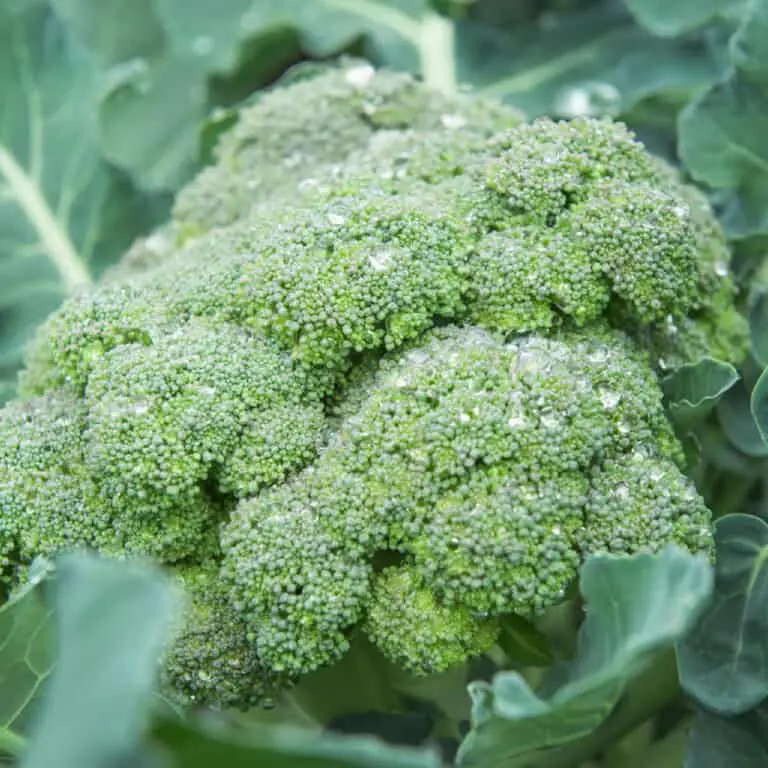How Many Carrots Per One Plant Produce? Maximizing Yield Output
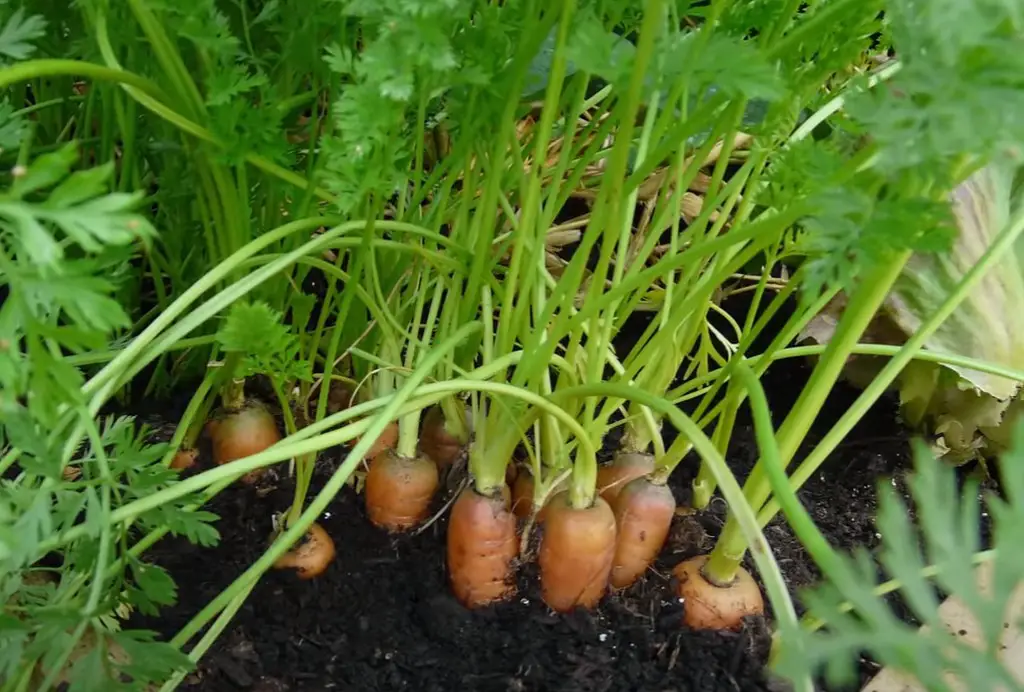
Carrots are a nutritious and delicious root vegetable that are easy to grow in the garden. But, have you ever wondered how many carrots you can expect from one plant?
Carrots are the taproots of carrot plants. There is only one taproot or carrot per carrot plant. If you hear people talk about “bunch type” carrots, those are carrot varieties that produce uniformly shaped carrots that look good in a bunch at the grocery store.
The yield of a carrot crop can vary a lot depending on many things, such as the type of carrot, the type of soil, the fertility of the soil, the growing conditions, and how the garden is managed.
In this blog post, we will dive into the key factors that influence the yield of a carrot crop and provide tips for maximizing the yield output of your carrot plants. Get ready to grow a bountiful harvest of crisp, juicy carrots this growing season!
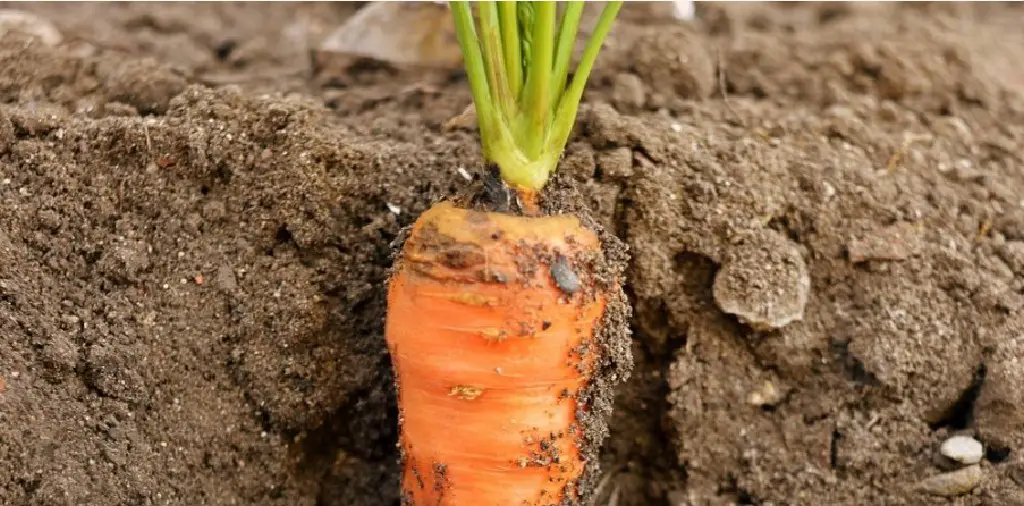
With this dug out carrot you can see that there is only one carrot per carrot plant. Multiple shoots of green top growth grow out of the top of the carrot, the taproot.
A taproot is a main root that digs straight down that other roots branch sideways from. This is opposed to a root system that we normally think of that has lots of branches going all different directions, that’s called a fibrous root system.
A carrot or beet taproot is specialized to store energy for the plant. Both plants are biennials, meaning they take two years to complete their life cycle.
Plants have come up with the “trick” of biennial growth so they can finish their growth life cycle in places with short growing seasons. The plant will use the taproot’s stored energy to produce flowers and seeds in its second year of life.
How Many Carrots Per Square Foot?
According to Seminis, the highest yield for fresh, used carrots is about 8 per square foot. Carrots grown for fresh use or processing are bigger than carrots grown for baby carrots or cut-and-peel production and so need to be spaced further apart to reach their full size.
Farmers growing carrots for cut-and-peel production want carrots that are about 5/8 inch thick. A higher plant density is used for carrots this thin.
In its purest form, square-foot gardening is a type of intensive gardening in which the recommended distance between plants is used to figure out how many of a certain plant to grow per square foot.
To adhere to the square foot gardening design, the recommended spacing for carrots is 2 inches apart, resulting in 16 carrot plants per square foot.
Carrot Plant Spacing & Yields
Like any other crop, tighter carrot plant spacing will lead to higher yields up to the point where competition for water, nutrients, and sunlight make it difficult for a full size carrot to grow.
Plant spacing and yields have been studied extensively in corn fields because corn is an important crop. Corn plants will have one ear of corn per plant throughout most of a field, but corn on the edges of fields will commonly have multiple ears per plant. There’s no mystery to this; it’s simply because the corn on the outside of the field has more access to water, nutrients, and sunlight.
How Many Carrots Per Seed?
One carrot comes from one seed. Carrots do not grow in bunches. Farmers and gardeners occasionally discuss bunch-style carrots. A bunch type carrot is a variety of carrot that produces long slender uniformly shaped and sized carrots that look good in a marketing sense.
Grow Bigger Carrots
There are two major factors in producing bigger carrots. One is choosing a variety of carrot that is known to produce big carrots, and the next is giving the carrot plant enough space to reach its full size.
Beyond those two is everything else, like weather and care, that gives the plant everything it needs to thrive and reach its full potential.
The world’s heaviest carrot weighed 22.44 lbs. and was grown by Chris of Minnesota. He said that his secret was good soil and that he did not pour radioactive nuclear waste on the plant. Chris replanted it in hopes of getting seed from it the following year.
The world’s longest carrot came from a UK grower and measured 20 feet, 5.86 inches. The grower grew his carrots indoors in long tubes for the sole purpose of winning the longest carrot in the world.
Factors that Influence Carrot Yield
1. Variety of Carrot
Different kinds of carrots grow in different ways and have different root structures, which affect the crop yield. For example, some varieties are more productive and make bigger roots, while others may make smaller roots but have a higher yield. The type of carrot chosen can have a big effect on how much of a crop is grown.
2. Soil Type
The type of soil in the garden can affect the yield of a carrot crop. Carrots prefer well-drained soil with a moderate amount of organic matter. Heavy clay soil can stop roots from growing and make them grow in the wrong shape. Lighter, sandier soil can help plants grow better and give a higher yield.
3. Soil Fertility
Soil fertility is an important factor that influences the yield of a carrot crop. Carrots need a steady supply of nutrients, especially nitrogen, throughout the growing season. Soil that is rich in nutrients can help plants grow better and give a higher yield, while soil that is not as rich in nutrients may cause a lower yield. You can make the soil more fertile by adding organic matter, like compost, or by using fertilizer.
4. Growing Conditions
The growing conditions, such as temperature, rainfall, and sunlight, can also affect the yield of a carrot crop. Carrots prefer a cooler growing season and can be damaged by hot temperatures. Adequate moisture, sunlight, and warmth are essential for optimal growth and yield.
5. Garden Management Practices
The yield of a carrot crop can also be affected by things like how it was planted, how well it was fed, and how well it was protected from pests and diseases. Taking care of your garden the right way can help make sure your crop is healthy and productive, which will lead to a higher yield. This means following the rules for spacing, making sure there is enough water, and checking the crop often for signs of pests and diseases. Regular tilling and weeding can also help improve the soil and make it better for plants to grow in.
How Many Times Can You Harvest Carrots?
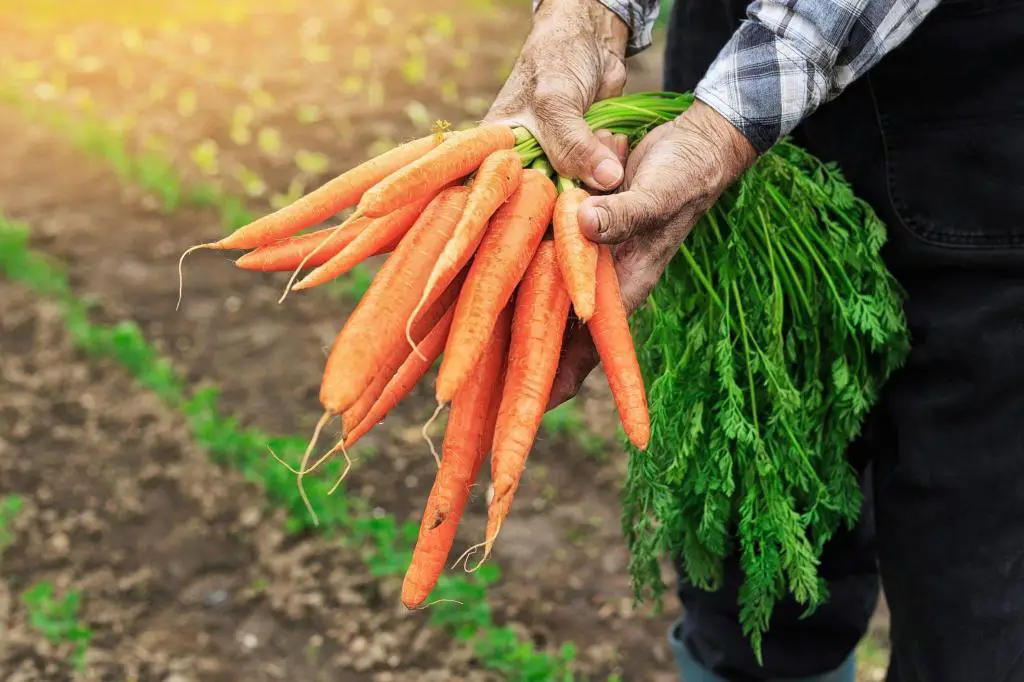
Carrots are easy to grow and can be picked over and over again during the growing season. The time it takes for carrots to mature can vary depending on the variety you choose, but most take roughly two to four months from seed to harvest. This means that if you plan ahead of time, you can have fresh carrots all season.
The best time to plant carrots is in the spring, when soil temperatures have warmed to at least 50 °F. You can also plant carrots in the summer for a fall harvest, but keep in mind that they will mature more slowly in hot weather.
One of the great things about carrots is that you can plant them throughout the growing season for a continuous harvest. This means you can enjoy fresh, nutritious carrots from early summer all the way through the fall.
Furthermore, if you have some garden space, you can grow different varieties of carrots with different maturation times, allowing you to have fresh carrots all season. So, how many times can you harvest carrots? As many as you like, if you plan your garden and care for your carrots plants properly!
Carrot Yields Per Acre
According to the AGMRC (Agricultural Marketing Resource Center), the average yield of carrots in the US in 2015 was 34,000 lbs per acre.
There are about 1,000,000 carrot seeds planted per acre, with germination rates around 85%. So each seed produces approximately.04 pounds of carrot, or approximately 40 carrot seeds per pound of carrot.
Luckily, there are about 275,000 carrot seeds in a pound of seed.
Carrot Cost & Profit Per Acre
The University of California Cooperative Extension gives a detailed list of the tools and costs needed to grow acres of carrots.
The study lists five years of carrot production from 1997–2001. The average value per acre for carrots grown for the fresh market was $5,639, and carrots for the processing market were $2,106.
After the five years, a projected cost and profit were listed for the next season, 2002–2003. Manual labor was estimated at $9.25 throughout the planting and harvesting processes.
Total land preparation, the growing period, and land rental brought the pre-harvest cost to $1,648. Harvest costs were estimated at $3,825 and included the rental of a harvest machine, hauling vegetables to a warehouse, sorting, and packing. That brings the total estimated cost of growing and harvesting carrots to $5,473 per acre.
If 37,500 lbs. of carrots were harvested per acre and sold at $5 per 50 lbs., the operation would lose $1,273 per acre. If the same harvest was sold at $7.00 per lb., there would be a gain of $227 per acre.



